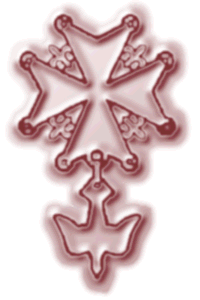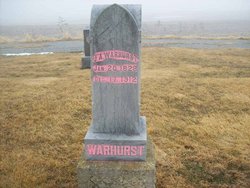 |
| William Noah Crow and Fannie Mae Whitten (ca. 1903) - g grandparents |
Beginning my quest of discovery this year to go back to my roots has been an awarding experience beyond measure. I began with a major thrust last winter and never looked back. Making this all the more interesting, I began to pursue the families of all four of my grandparents. The number of individuals and families has become massive and it may take my lifetime to completely analyze all of my sources. I'm no professional genealogist and they would likely say that I need to correct my methods and source collection - among other things. But that too is all the process of discovery. I've slowed my research a bit to begin to pace myself and to try to patch up informational and procedural mistakes before I go further. Yes, I've made mistakes, and there will be mistakes found as you go through the links to the family trees, but I view these as only beginnings and items to be corrected. However, I need the help of my cousins, and aunts, and uncles, to assist me in this endeavor.
The Phil Erwin's Family Story website is only the beginning. This Plains Holly Tree blog is intended to convey stories handed to me or learned by me during the process of discovery. I am proud to hold the record here and to share it with all my relatives. But I am also sharing with scores of people who are on their own missions of discovery as well. Several distant cousins from the Crow, Street, and Erwin lineage have now contacted me via their search as they discovered these sites, and they are telling me much about our common ancestors. My parents and their siblings have found a renewed interest to rediscover their past and their memories. I think this can only grow from here out.
I have started something here I would love to see grow into a movement by my cousins. In the coming year, I will endeavor to find the best solution to provide each of my cousins a place to come and to write about memories and stories of our ancestors. This can be a diary of memories. It will not just be my story of discovery, but yours as well. My intent would be to provide a single place to just come and write, or send scanned documents, for sharing. I also encourage each of the younger cousins who would like to start their own sites, or might like to contribute to this one, to reach out to our elders and begin to convey their information to paper or to digital storage. Let's discover our lost treasures of photos and other documents and begin to share with each other. There is a wealth of memories and shared history to give to each other. In the process, I believe this will also bring us back together.
This work is a gift to myself. But it is also my gift to all of my family. I've learned in rediscovering my cousin Lynette, whom I had not seen in so many years, that there is great warmth and strength in the bond of family. It has never lost us. We lose each other. There is much for us to rediscover and to find anew. There are lifetimes of stories to share with each other. I hope you will find my website as a beginning for this endeavor and we can build up from this foundation.
 |
| Hardy Street - g grandfather |
For 2012, you can access my Ancestry.com page, 'Erwin/Street - Howard/Crow of Oklahoma' . It also has Ricard links for my wife, Mary. Yes, I've been busy. It's also accessible at a link at the bottom of the Family Story main web page. If you want to start your own search, I recommend you try my 'Reference and Other Genealogical Research Sites' page for starting places. The Google form at the top is handy in trying to use Google Search to find information on family. There's a lot of information out there beyond Ancestry.com and other genealogy web sites. The great thing about genealogical research is that everyone helps each other.
Ancestry.com has some new items coming up for 2012 which is working to make it more useful to researchers everywhere. Everyone is all excited about the 1940 census coming online later this Spring and there will be multiple ways to access those records. It's important to note that you don't have to have a paid subscription to any site to be successful in your research, but they can have conveniences you might find helpful. It's not only about accessing records, but having them organized and traced with other families. You can access the earlier census records on Internet Archive (a free site), but digging through them - and knowing the right one - is the chore. Find the paths of least resistance and you'll be less frustrated.
 |
| David Jackson Howard and Helen Warhurst Howard - g g grandparents |
Finally, in 2012, I hope to find the courage, the time, and the resources, to be able to go find people and locations and share and talk about our ancestors. To date, I have done very little outside of web research and collecting the known information from relatives, like Uncle Lawrence, who have committed great time and resources to discover our past. At some point, I have to go down the roads not yet traveled. This is the true great journey still before me. I hope from my heart you will share in this exploration with me.
 |
| Any guesses? |









